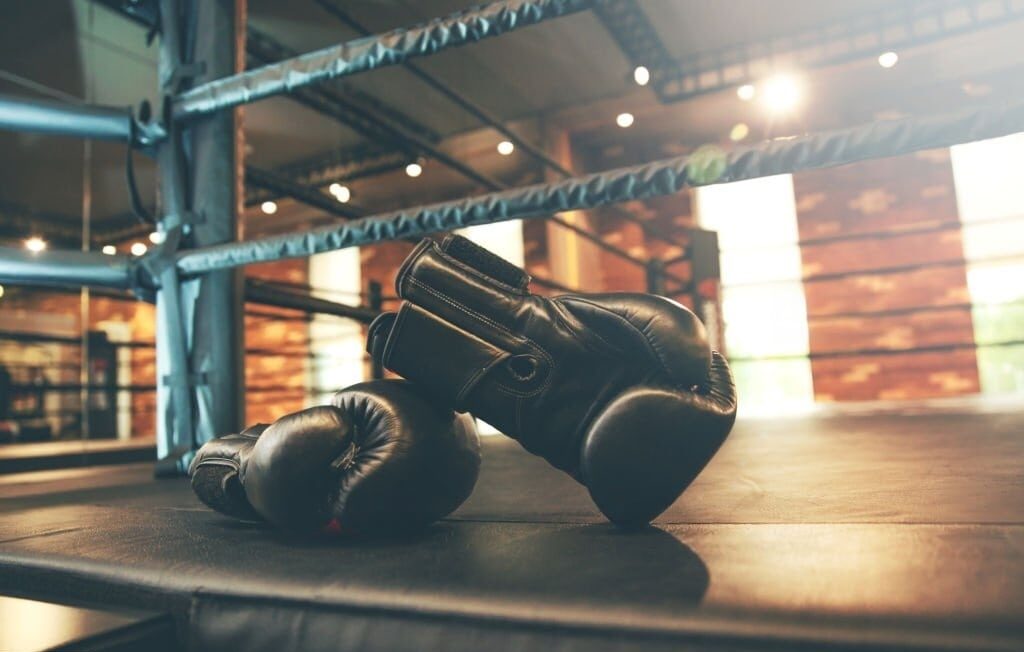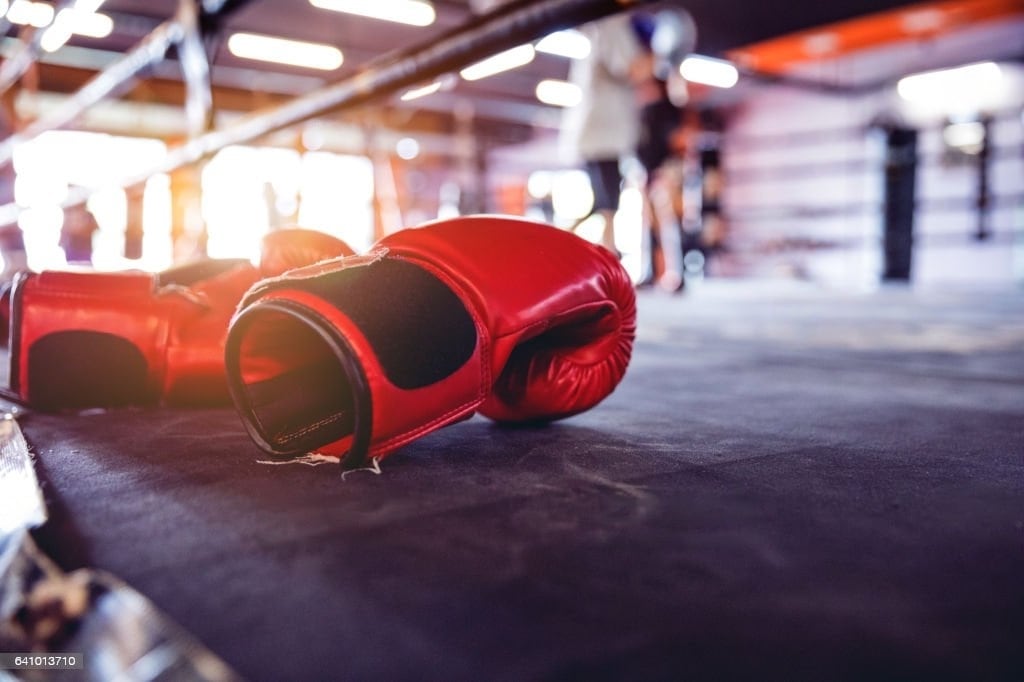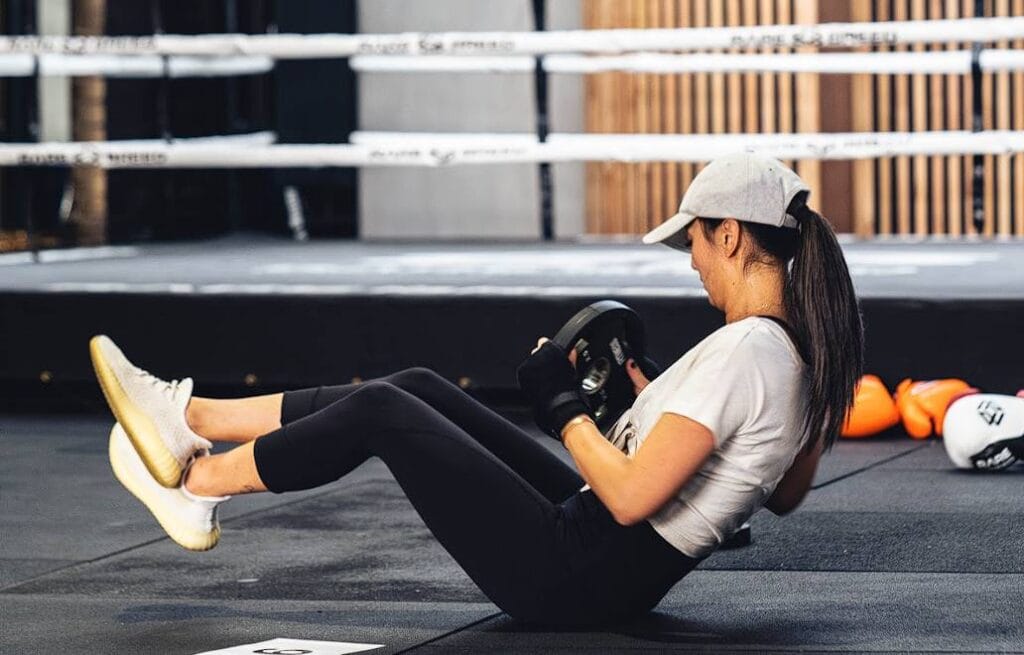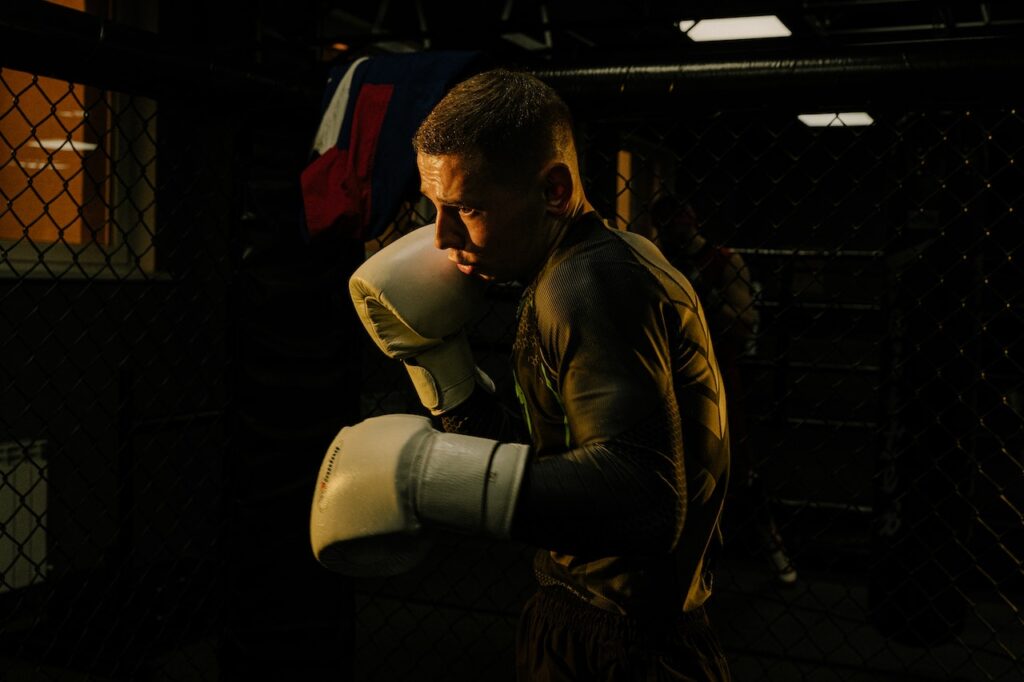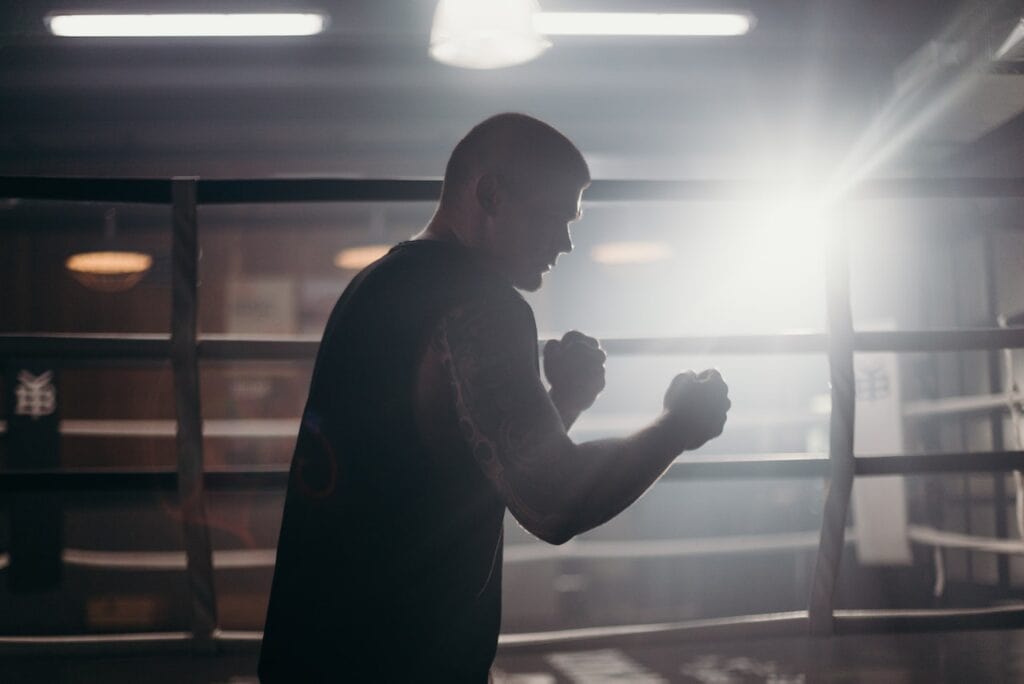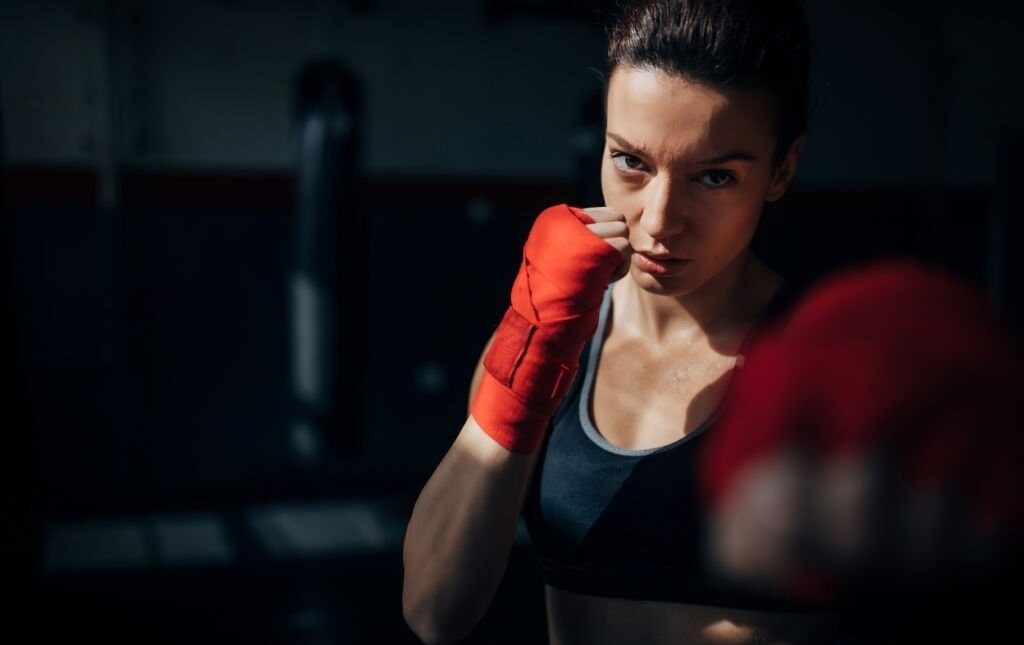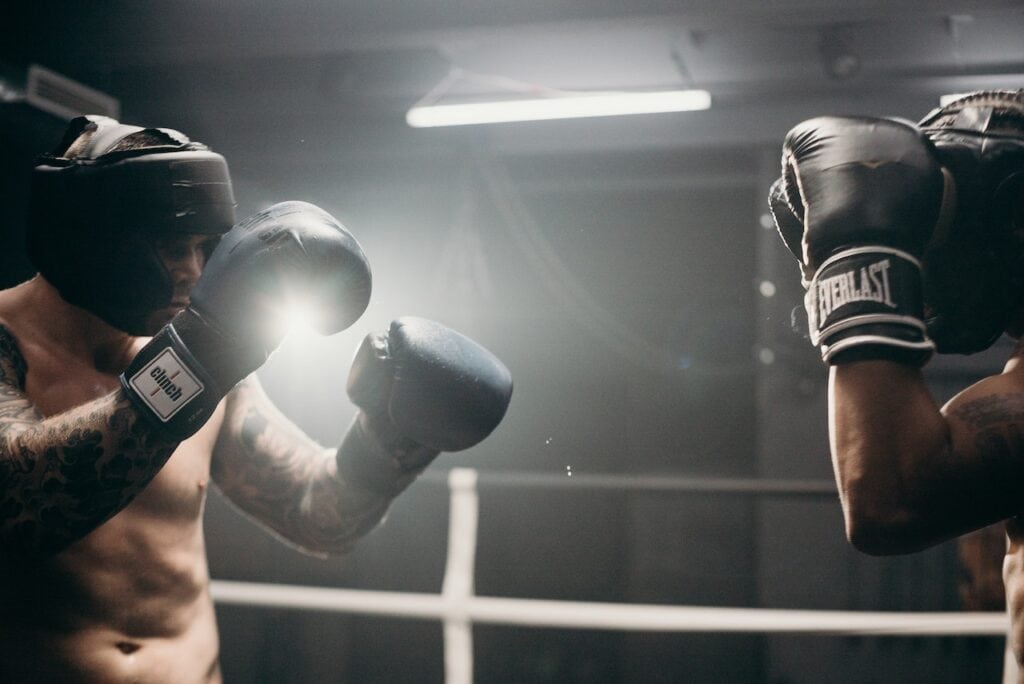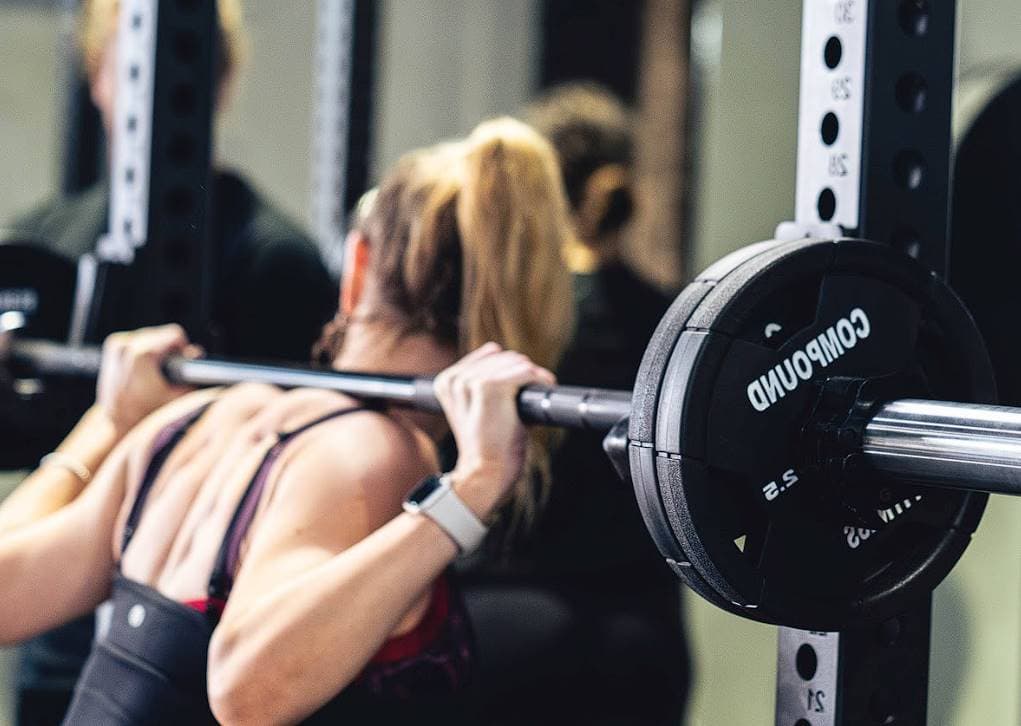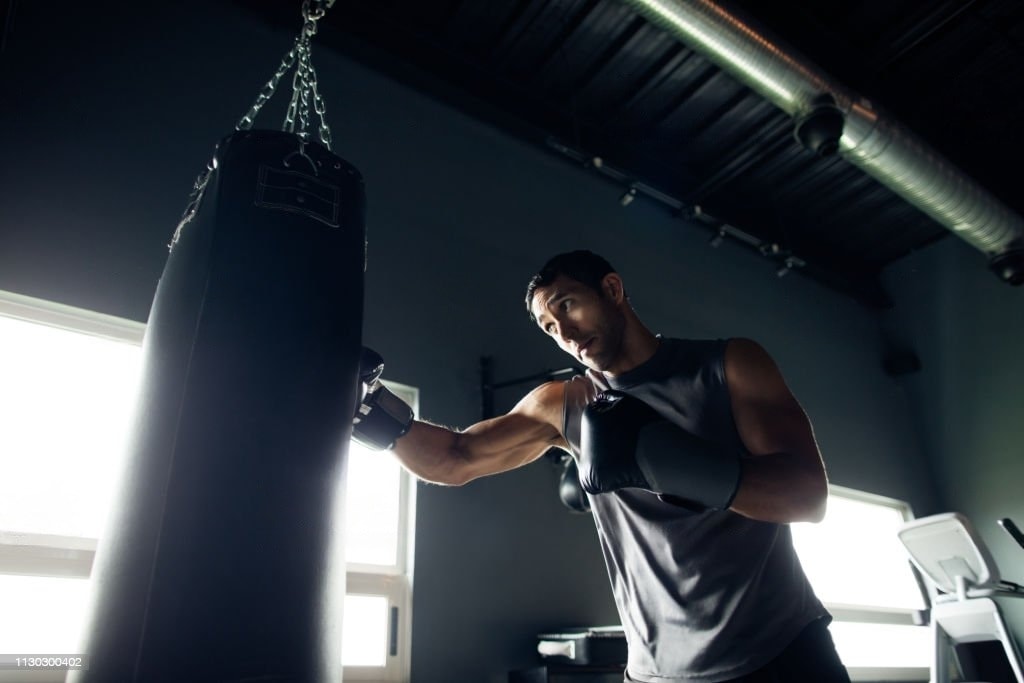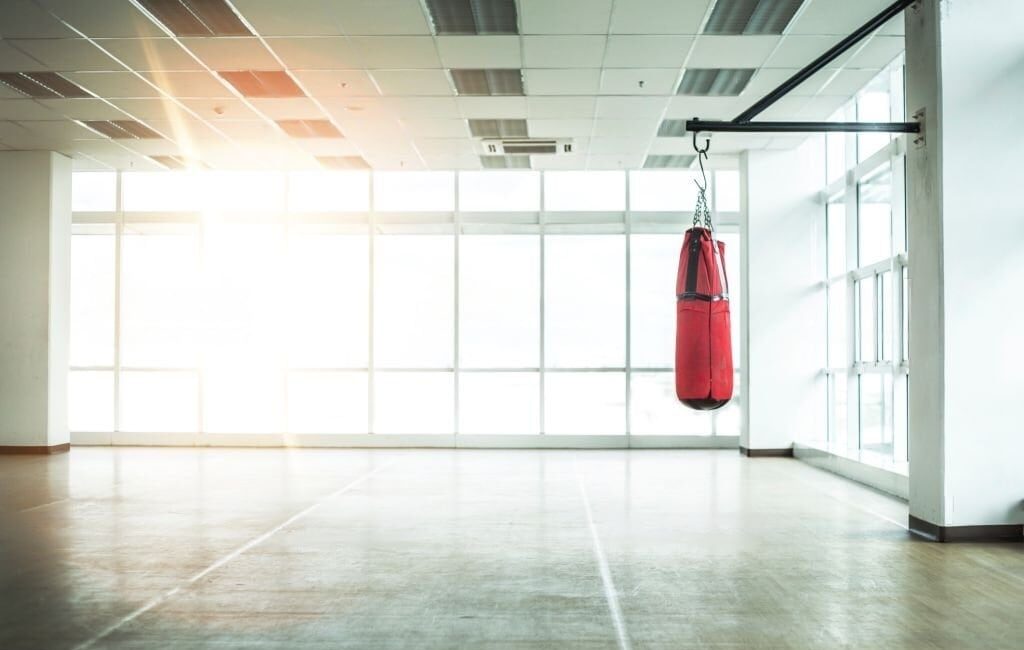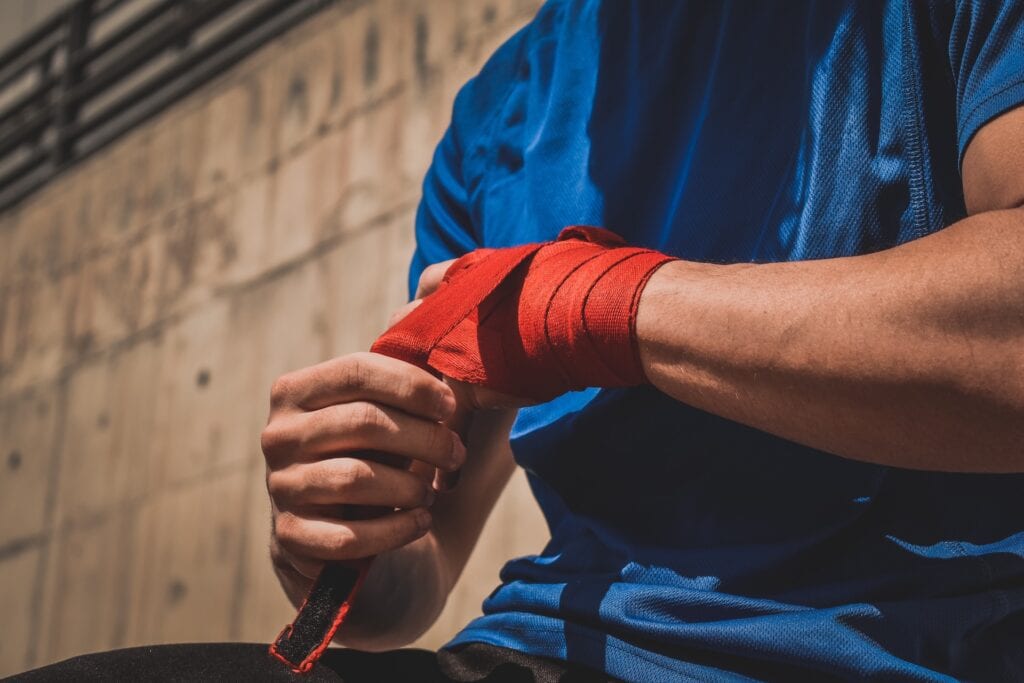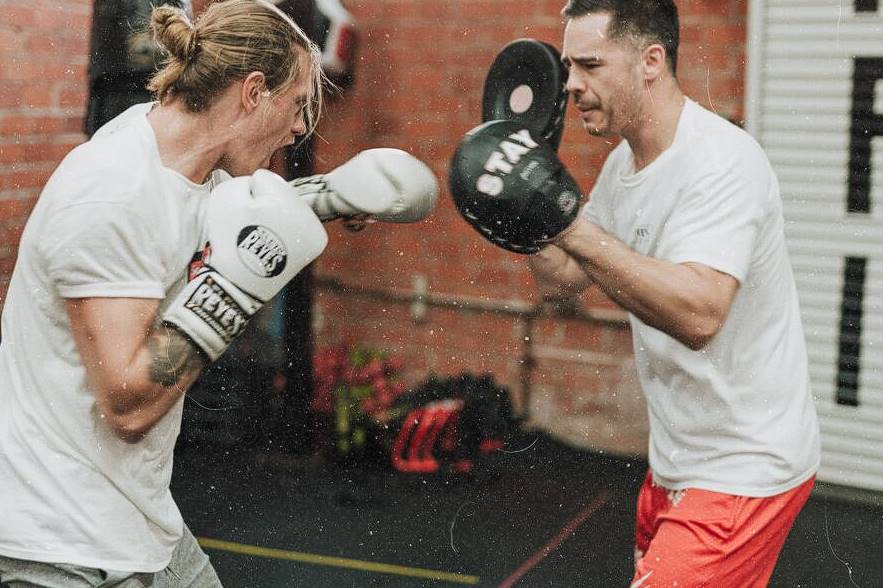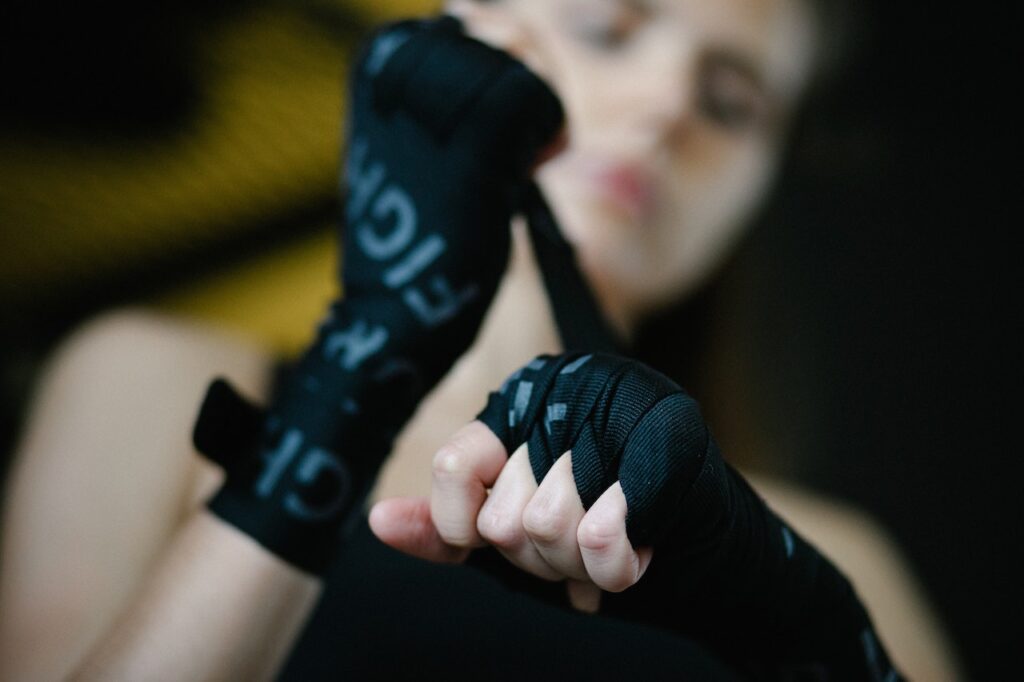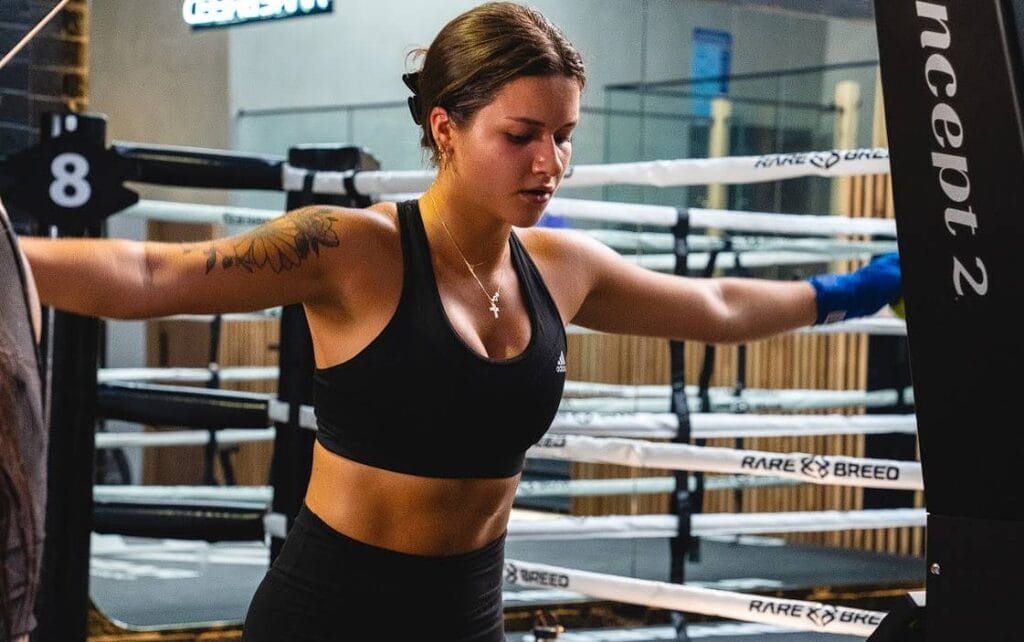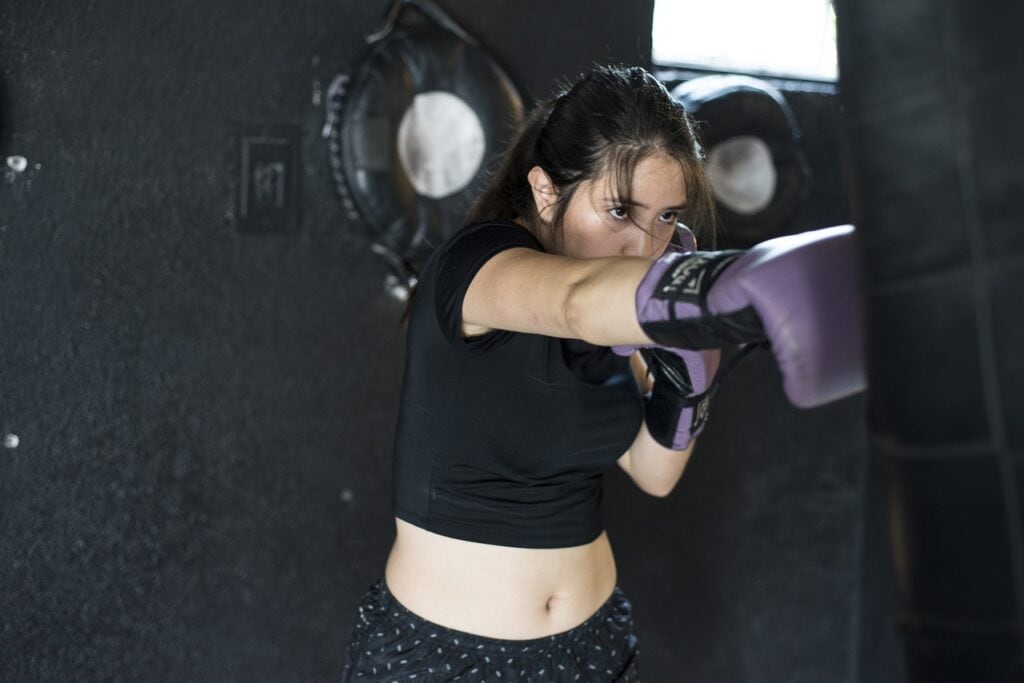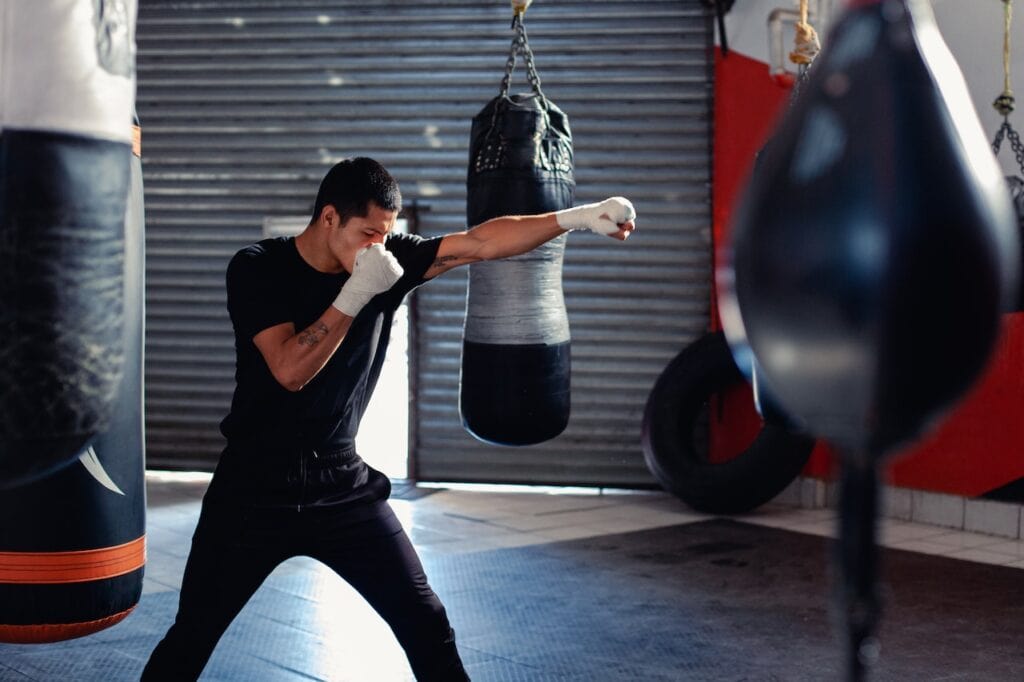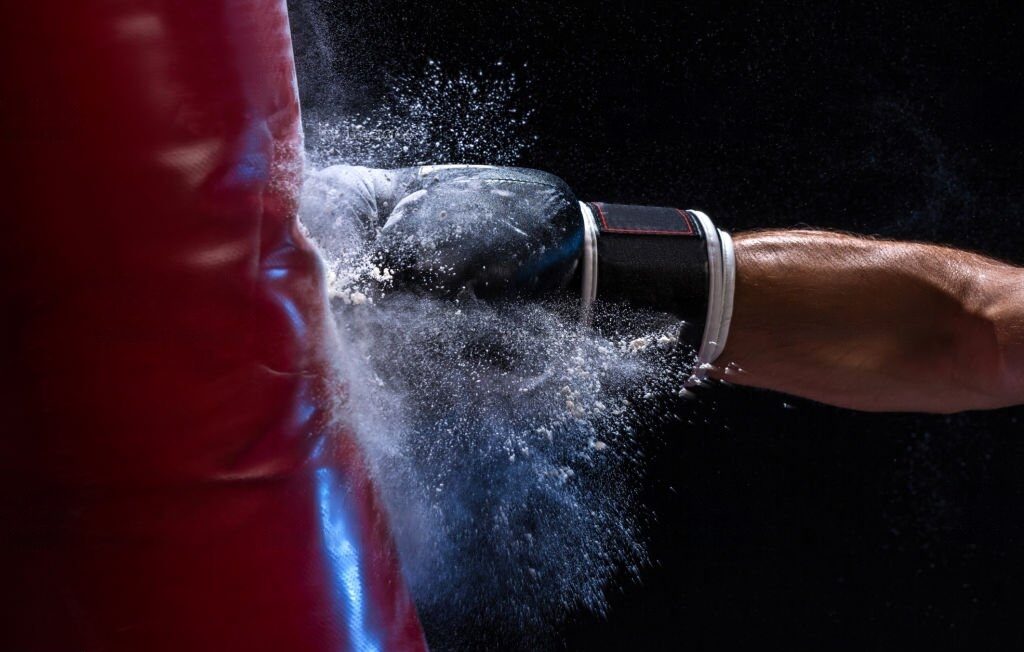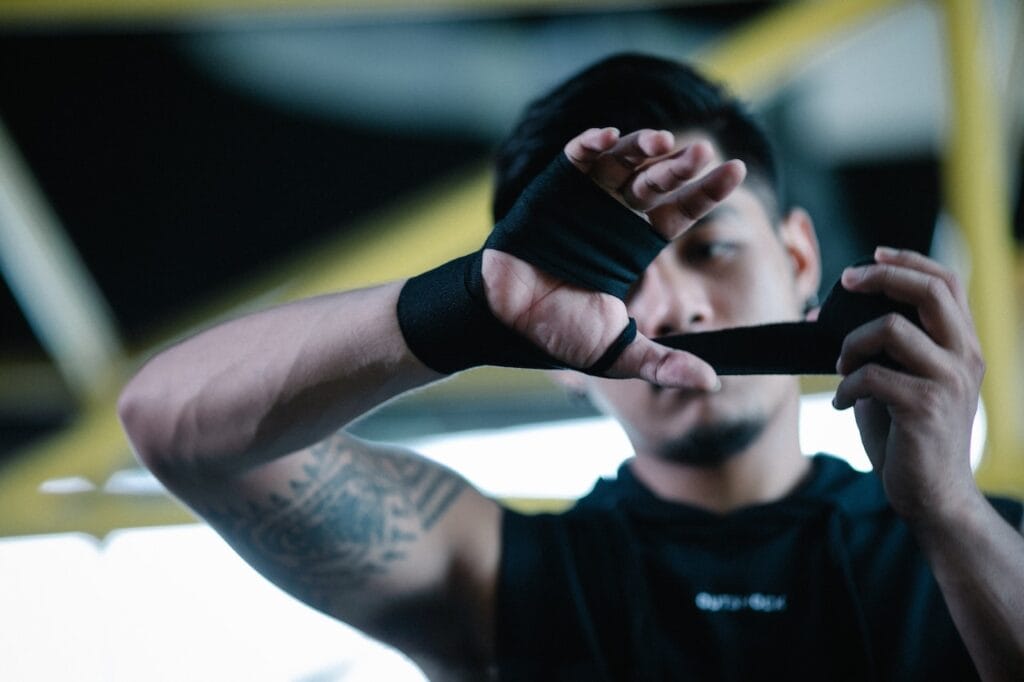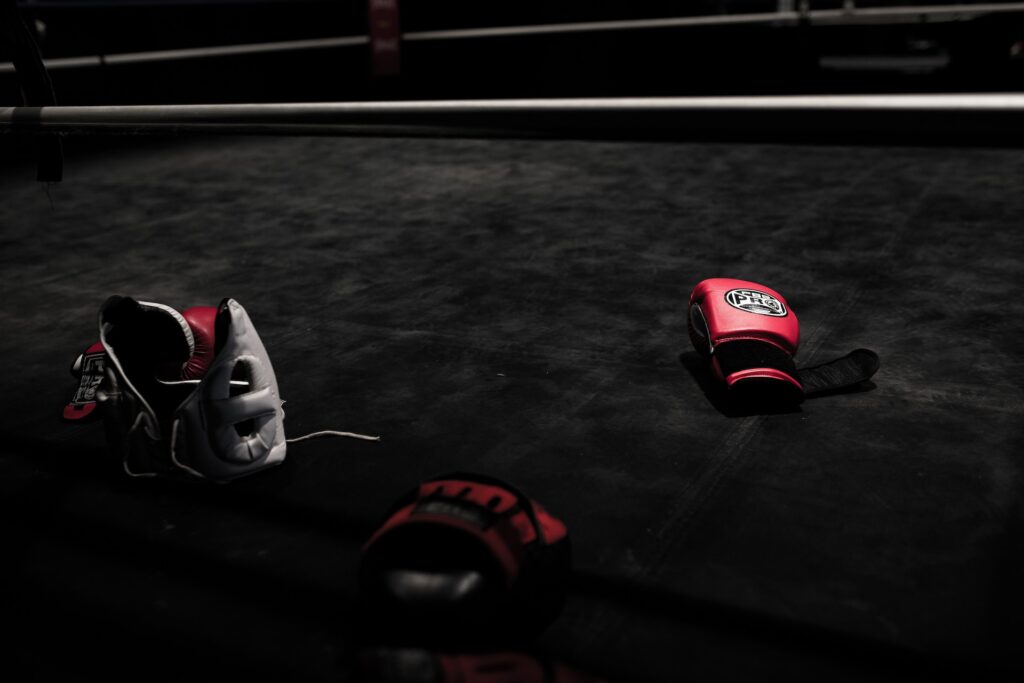It takes more than simply having powerful punches to make a good boxer. No matter how violent the professional boxers may appear in the ring, they always consider the precautions they can take to avoid getting injured while boxing or even training. It is true whether they are boxing or training.
Most boxing trainers focus on teaching their boxers tactics that successfully reduce the risk of injury. Of course, the only thing that matters in boxing is hitting your opponent with punches and landing your fighting combos, but there are other aspects.
As a fighter, you must be aware of how to avoid getting hurt; only then will you be able to improve your skills over time.
Boxing is a sport that is well-known for its dangers; nevertheless, if you take the necessary safety measures, engaging in the activity regularly does not have to result in harm.
In this post about boxing for beginners, we will discuss the best techniques to practice boxing safely, from getting ready for hard training sessions to full contact sparring and the equipment you will need to complete it.
8 Essential Safety Tips for Boxing
1. Wear the Right Gear
Entering the ring with the appropriate protection is essential to keep your body safe while you are engaged in the fight. You need to make sure that you have the following protection equipment, all of which should fit you well and be in good condition:
- Boxing gloves
- Wrapping by hand
- A guard for the head
- A dental guard for the mouth
- When necessary, a chest guard; when necessary, a groin guard
- Appropriate clothes to absorb sweat
- Boots used in boxing
Wearing protective gear during a boxing bout could mean the difference between walking away from the fight with a few small bruises and walking away without your teeth.
It is the responsibility of a boxing coach to decide which kinds of boxing equipment should be utilised for which kinds of fighting or training. Boxer needs to ensure that their equipment is comfortable and does not restrict their movement.
2. Use Petroleum Jelly
Petroleum jelly, one of the book's oldest secrets, helps prevent severe face lacerations and friction burns. Petroleum jelly may be found in most drug stores. In addition, applying petroleum jelly to your face assists in deflecting strikes from your opponent by making it easier for them to glide off the face.
Petroleum jelly can also help treat small skin abrasions and wounds, and applying it after friction burns can also benefit the healing process. Its emollient properties help to soothe the skin and act as a barrier between exposed wounds and the outside elements. In general, though, cuts that are significant and bleed need to be cleaned and dressed as soon as possible after they occur.
To lessen the likelihood of irritation, select a petroleum jelly that is one hundred per cent pure and does not have any added perfumes or other ingredients.
3. Pre-Match Checks
Some pre-match checks must be completed to comply with the laws of the national governing body. For example, a pre-fight medical examination should be carried out on each participant in a boxing match by a qualified medical expert to guarantee that they are in good enough shape to compete.
Boxers should also be paired with one another according to their age (18–40, youth, junior, schools, minors, and adults) and their weight. Again, it is the responsibility of a boxing trainer to verify this well before the contest.
In addition, it is essential to take precautions to ensure that you have all of the necessary first aid supplies available. For example, make sure that your boxing first aid kit has been completely refilled, that there is an operational defibrillator on the premises and that you know where to find it. Because a cardiac arrest can be fatal in as little as 10 minutes, immediate action must be taken if one happens.
4. Pre-Match Checks
Stretching is essential before beginning any boxing activity, whether a fight, sparring or just training with the bag. Warming up before a competition boosts your performance and makes it easier for your muscles and ligaments to handle the stresses of extending and moving quickly in various directions.
Boxers frequently suffer from sprains and strains, either as a direct result of a single action or as a cumulative effect of their continued participation in the sport.
In the pre-boxing game, one of the most important steps involves stretching the chest, the arms, and the legs. In addition, remembering your neck and spine is crucial because these often-overlooked areas play important roles in evading punches and landing them.
Your body will be more prepared for a boxing battle if you include these three stretches in your training:
- Calf and Achilles Stretch in Standing Toe-Up Position
- Alternating Between a Reverse Shoulder Stretch Spinning Abdominal Stretch
5. Ice Injuries
Applying ice to a wound caused by impact can significantly enhance the trauma region and make the combatant feel more at ease.
However, after receiving a hit to the face, blood vessels just under the skin have the potential to burst, which will cause blood to rush into the affected area and become trapped there. This condition, known as a haematoma, frequently affects the sensitive tissue in and around the eye (causing a black eye).
Icing a haematoma causes the blood vessels beneath the skin's surface to contract, which in turn slows and stops the occurring bleeding.
It helps minimise swelling and brings the injury's intensity to a more manageable level. A muscle that has been strained or ripped, as well as a tendon that has been sprained, might all benefit from applying an ice pack.
While going into a boxing bout, it is a good idea to have an immediate ice pack available for use. It is unnecessary to store your ice pack in a freezer to keep it frozen because an instant ice pack utilises an endothermic reaction to chill down.
6. PPE and Infection Control
As a result of the pandemic, everyone is aware of the significance of personal protective equipment (PPE) in preventing the transmission of the Covid-19 virus and catching it themselves. As a result, you should double-ensure that necessary precautions have been taken.
Boxing, on the other hand, exposes participants to several risk factors for the spread of infections, including cuts, scrapes, open wounds, and blood splatters. Therefore, it is of the utmost significance to lessen the likelihood of a bloodborne illness passing on to another person or bacteria entering an open wound. To maintain a sanitary environment, we encourage the use of the following items of equipment:
- Swabbies with cotton tips can apply medicines such as petroleum jelly and antiseptic.
- Nasal plugs are used to stop nosebleeds, assist boxers in returning to the fight, and prevent blood from splattering.
- Nitrile gloves allow for hygienic treatment of wounds while also protecting from body fluids.
7. Mental Health
Boxing has many positive effects on mental health, including lowering anxiety and stress levels, increasing confidence, and fostering an inclusive environment within your gym.
Boxing is a sport where competitors must look out for one another's health. So ensure you are in the right mind before engaging in combat. The England Boxing Wellness Wednesdays event provides access to helpful information on mindfulness practice in boxing.
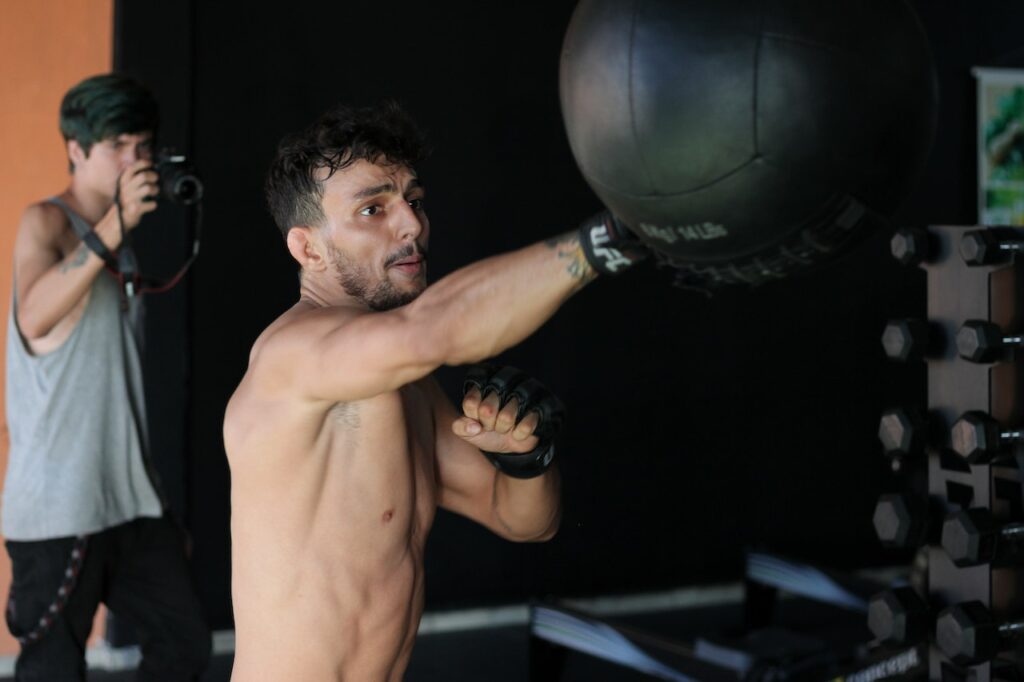
8. Report Safety Concerns
Look out for your safety, your fighter, and anyone else who might be nearby when you participate in boxing. Report anything you see or experience that puts you in unnecessary danger or makes you feel like you aren't in a safe environment to the regional association serving your area. On the website of England Boxing, you will find a list of all of the regional boxing associations in the country.
Do not be concerned about filing a complaint against a boxing gym or professional if you believe the behaviour of either of these individuals poses a risk to others; it is essential to the sport of boxing that all participants be kept safe to ensure that fights can take place without incident. Your local organisation might look into it, but they will only say where they obtained the information if they do.
Boxing for Beginners: Safety Tips for Boxing
What Are The Most Common Injuries In Boxing?
Sprains
Sprains are painful. They can prevent you from training for some time and, depending on what you do, even interfere with your regular employment. Your ankles, wrists, and thumbs are the three body parts most likely to get a sprain.
Because boxing requires so many changes in direction, rolling your ankle while playing the sport can quickly lead to a sprain. You may prevent this by investing in a quality pair of boxing boots that support your ankles.
In addition, when working out on the punch bags, your thumbs and wrists are exposed, so protecting them with hand wraps and boxing gloves with closed thumbs will go a long way toward preventing injuries.
Concussion
Each sport that includes head contact exposes athletes to the possibility of sustaining a concussion. A concussion is an extremely serious injury; sustaining many concussions over time can cause irreversible brain damage.
Boxing training makes it easy to sidestep this potential danger. You can wear head protection while sparring, which provides additional padding or avoid sparring.
Cuts and bruises
Because boxing is a full-contact sport, participants should be prepared to sustain several scrapes and bruises. It is especially true in styles like Muay Thai, where participants use their legs to block and their knees and elbows to attack.
Selecting the appropriate protective gear, such as leg padding, helmet guards, and gloves, will go a long way toward assisting you in preventing serious cuts and heavy bruises of any kind.
Fractures
Hand and nose fractures are the most common injuries sustained in boxing matches. An adversary would constantly go for the nose because it is a sensitive body region and may easily be broken. Working on your defence is essential to avoid getting nose punched because there is virtually no protection other than ducking and stepping out of the line of potential attackers.
Punching with a heavy impact can cause fractures in the hand. When working out at your neighbourhood gym or home, hand wraps and boxing gloves, especially if applied properly, will prevent you from needing to take breaks.
Real-world street fights are typically more fierce than simulated ones, producing more serious fractures. Before beginning boxing training, consult your primary care physician if you have frail hands due to an earlier injury.
Best Ways To Avoid Injuries In Boxing
Performing a Good Warm-Up
Boxing, like any other form of physical activity, must start with a full warm-up. In most cases, your coach or trainer will have you skip before the beginning of every session. Skipping needs movement on your toes, similar to how a boxer moves about the ring and rotation of the wrists, which are the fundamentals of any solid punch.
When you have skipped for five to ten minutes, it is a good idea to go for a little run to increase your heart rate while simultaneously training your lungs.
A run need not be over an extremely long distance; a distance between two and three kilometres is sufficient. Just ensure it's not a piece of cake and requires serious effort from you.
Basic Protection
Once you have warmed up, you will likely get onto the pads at some time. You will need a few essential pieces of equipment, which you will find in this post, before engaging in pad work, bag work, or sparring. You can find these items here.
Full Contact and Sparring Safely
When you head to head with an opponent in boxing, whether someone at your gym or an adversary in a full-contact competition, you run the greatest risk of sustaining an injury.
It is true regardless of the setting. However, because a few areas of the body require additional protection, you will need to consider the following.
Groin protection
Groin protection, also called a box, is designed to safeguard your bottom regions against errant hooks. Also, they can add cushioning to your lower stomach, and according to boxing legislation, any fighter, whether amateur or professional, competing in an official match is required to wear one.
Whether you are training in Muay Thai or kickboxing, the groin protection you wear will be much smaller to have more freedom of movement in your legs for kicks and blocks. Because of this, you must choose the appropriate gear for your chosen sport.
Face Protection Jelly
When you see a boxer or a mixed martial arts competitor on television, they appear to glow beneath the bright lights. Yet, this is not done to improve their appearance; rather, it is done so their opponent's bullets will be deflected away from their face and torso.
Vaseline or petroleum jelly is utilised and applied before the competition and between the rounds. Be aware that if excessive makeup is applied to your face or body during an official competition, a referee will direct you back to the corner to remove the excess makeup.
Heat Liniment
A well-applied heat cream to the legs can greatly assist in preventing muscular strains, as kickboxing and Muay Thai includes a significant amount of stretching when performing kicking and blocking techniques. In addition, while engaged in a full-scale conflict, combatants will also apply this technique to their arms and torsos.
How to Prevent Injuries In 9 Ways
1. WEAR THE PROPER PROTECTIVE GEAR
Even in light sparring, it is important always to wear the right protective gear because it is simple to acquire injuries such as cuts within the mouth.
It is true even if the sparring could be more intense. Even if the competition could be more strenuous, it is the case. Therefore, you must always consider the following preventative measures when dressed in protective gear.
- Be sure that your head protection has sufficient padding, that it is comfortable to wear, that it allows for easy airflow, and that it does not restrict your field of view.
- Boxing gloves suitable for training and sparring: If you weigh less than 147 pounds, both your gloves and the gloves of your sparring partner should weigh at least 14 ounces. If your weight exceeds that of the normal individual, select at least 16 ounces. Because sparring gloves offer additional padding compared to training gloves, you must ensure you have the appropriate pair.
- When working out with boxing gloves, you should: It is recommended that you buy a new pair of gloves specifically designed for usage with the heavy bag and any other type of bag work. Since you will be striking the bags regularly and with significant force, you will require greater protection. As a direct consequence of this, larger gloves are strongly advised.
- Groin guard: For reasons that should be self-evident, it is recommended that you acquire a larger groin guard that is both comfortable and features additional padding.
- Mouth Guard: You must always wear a mouth guard whenever you engage in sparring. It is highly recommended that you first step into the ring with a mouthguard made specifically for your teeth and gums and fitted to them. It would help if you opted for one that has a solid reputation and name behind it because it is likely that the less expensive ones will not supply you with a suitable mould. It is fine to have only the top, but if you prefer to have both the top and the bottom, that is an alternative. Having just the top is acceptable.
- It makes no difference whether you are sparring or working with bags regarding hand wraps. Keeping hand wraps on at all times might be beneficial to your situation. Please check that they are at least 460 millimetres long to wrap around your hands and give the requisite amount of protection for your hands. It would be beneficial for you to choose a semi-elastic type.
2. ENSURE YOUR HANDS ARE WRAPPED PROPERLY
Always check to ensure you are employing the appropriate method of hand wrapping. There are a lot of videos that can be found on the internet that can guide you through the process of wrapping your hands in a variety of various ways.
In addition, regardless of the approach you decide to use, you should check to see that the knuckles and wrists of your gloves have adequate cushioning.
Always wrap with your hand stretched out so that the wrapping will become more compact when you make a fist. But it would be best to watch out that you don't wrap it too tightly since this could potentially restrict blood flow and cause great discomfort.
If you wrap the bandage around your fingers, you can offer the right support and avoid hand injuries more efficiently.
3. DO STRETCHING EXERCISES REGULARLY
Boxers face a greatly elevated risk of muscle strain and injury due to their sport. The reason for this is that doing stretching exercises regularly will lead your muscles and ligaments to lengthen, ultimately increasing your range of motion.
As a direct consequence, the risk of you suffering from musculoskeletal sprains and strains will decrease.
You may benefit from stretching exercises targeting particular muscles, such as the muscles in your hamstrings, quadriceps, and shoulders. Also, before you start engaging in free sparring, ensure you have finished your warm-up exercises, which your instructor ought to expect of you.
The use of resistance bands is beneficial for lengthening and releasing contracted muscles, as well as for developing stronger muscle fibres.
4. USE MOISTURISERS TO PREVENT NOSE BLEEDS
When the skin that lines the inside of the nose is dry and brittle rather than wet and pliable, it is more susceptible to tearing and cutting than when it is the other way around. It is possible to properly condition the skin inside the nose by performing steam inhalations, using saline water nose drops or utilising natural moisturising nose sprays such as Aloe Vera.
All of these methods involve the use of steam. In addition, you can lower your risk of suffering a nosebleed by moisturising the skin inside your nose before indulging in physical activity. It will help prevent nosebleeds.
5. LEARN THE CORRECT PUNCHING TECHNIQUES
But, despite being the most precious tools you possess, your hands are also the ones that are the most susceptible to injury. Knowing how to throw a punch properly will help you limit the damage done to your wrists and fingers during your boxing career. To guarantee that your wrist is in the correct position when you punch, you should always ensure your hand is clenched into a fist.
When you strike, you should aim for the knuckle of your middle finger to be the first part of your hand to make contact with the target. It will maximise the effectiveness of your blow.
Boxers regularly suffer fractures and breaks in the bones in their thumbs because of how they throw their blows. In addition, it is one of the primary contributors to injuries sustained in sports regularly.
6. APPLY PETROLEUM JELLY ON IMPACT SITES
Because your face is where you are most likely to pick at your skin, apply a thin layer of petroleum jelly. It will make the skin slippery, malleable, and elastic, reducing the likelihood of punch-related injuries such as cuts and bruises.
Even though head guards are not allowed in professional games, it is still possible for players to sustain face injuries during the fighting. Nonetheless, the circumstance is the one in which wearing one will benefit you most.
7. IMPROVE YOUR FITNESS LEVEL
It is essential to practice effective self-defence to limit the amount of damage you sustain. In addition, it would help if you had a high level of stamina and endurance to be able to handle the rigorous training methods used.
If you have a high level of physical fitness, you can go through the bouts with a clear head and protect yourself by maintaining quick footwork and agile reflexes. Of course, you need to have a high level of physical fitness to do both of these things.
Yet, if you want to be successful at both, having a high level of physical training is necessary. It may be tough to move around when you are weary, but it is essential to remember that you should always be on the lookout for any dangers.
Every athlete ought to take a diet abundant in nutrients, as this will enable their body to recuperate and continue to be strong even after intense exercise. Therefore, your daily diet should include sufficient amounts of calcium, protein, and vitamin D in adequate amounts.
Regular use of calcium will contribute to the development of stronger bones. In addition, it will assist in reducing the chance of fractures and make it possible for the bones to recover from a break in a shorter amount of time should they become fractured.
Drinking an adequate quantity of fluids consistently is necessary if you want to ensure that your body is always appropriately hydrated. Boxers, for instance, should take sports drinks between their bouts and while they are training to replace the electrolytes and water they lose through sweat.
If you do not pay attention to this detail, your body will become dehydrated, and you will experience feelings of exhaustion. As a direct consequence, the possibility of receiving brain damage such as a concussion, for example, will greatly increase. Amateur and professional boxers have found the 30-Day Fighter's Diet program beneficial in efficiently managing their weight.
8. CONSULT A DOCTOR WHEN IN PAIN
Combatants often ignore discomfort until it has reached an intolerable level, even though it could have been averted by consulting a physician.
Suppose you are unable to see a doctor for whatever reason. In that case, it is in your best interest to conduct research online instead, as it is extremely likely that someone has been through the misery you are presently experiencing. They will offer guidance and recommendations on how to remedy or cure the situation.
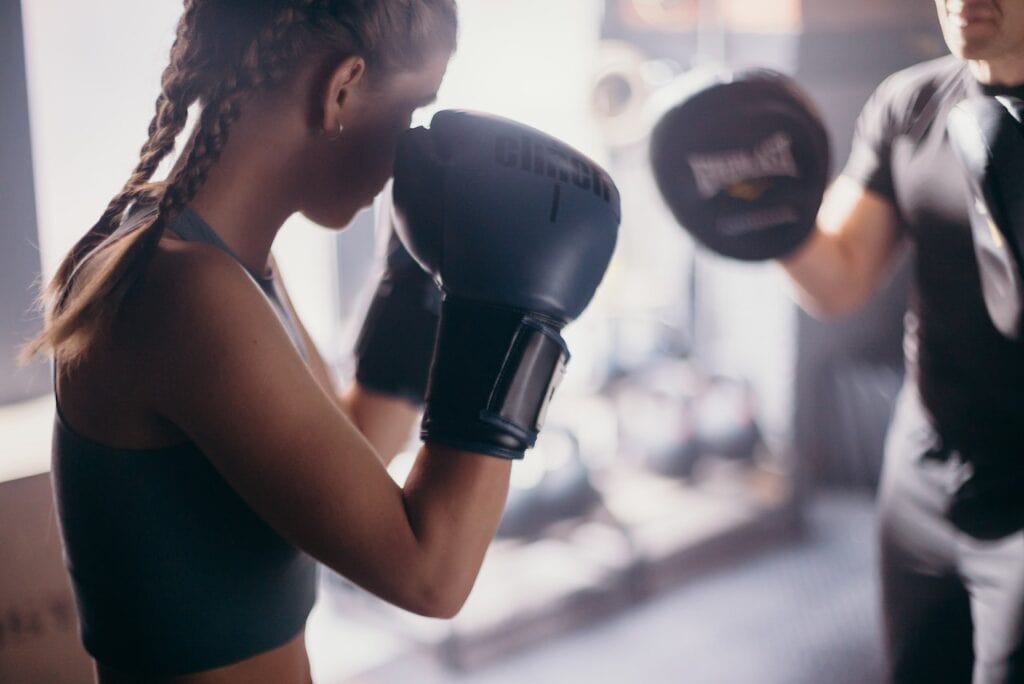
9. LET YOUR BODY REST
It is appropriate to exercise vigorously and challenge oneself to the fullest extent; nevertheless, if you are experiencing severe pain while working out, you need to stop and discover the problem.
The damage may be severe, or it has the potential to become severe if you do not pay close attention to it. Hold off on going back into your workouts until it has completely recovered before doing so.
When you push yourself beyond your limits, you will often feel the aches and pains the next morning. It is a good indication because it lets you know that you've put in some serious work, but it is important to keep in mind that if you are going to do any exercise (if you can), you should take it gently so that your muscles can recover much more quickly. But, again, it is important because it indicates you've done serious work.
What To Do Immediately After Getting An Injury?
As boxing is a physically demanding and aggressive sport, you will likely be injured when sparring. You must be familiar with how to treat such injuries to lessen their severity instantly.
Getting To Know The Symptoms
First things first, pay attention to how you feel. For example, if you notice inflammation in your muscles, this indicates that they may have been harmed. Likewise, a twisted joint can be identified by discomfort when it is moved, along with signs such as a tear or pop in the joint.
In addition to the classic signs of muscle strain, such as swelling and cramping, you may also have muscle weakness, which results in the muscle's inability to perform its normal role.
Feeling lethargic and dizzy in the head could indicate that you are not getting enough water or that your diet lacks nutrients.
When you can accurately diagnose the symptoms of an issue, it will be much simpler for you to proceed with a treatment plan for that problem. Hence, the first stage in the process of treating an injury is to comprehend what it is that your body is attempting to convey to you.
Icing
A relaxing effect can be achieved almost immediately by applying ice or a cold compress to the muscle that is being afflicted. In addition to this, applying ice to the affected area might help reduce inflammation and swelling. If you are seeking a quick and free painkiller, then ice will promptly take care of your needs.
Ice reduces inflammation by constricting blood arteries that deliver cytokines to the site of an injury. Cytokines are the chemicals that are responsible for the inflammatory response.
Keeping The Injured Hand Elevated
If you sustain an injury to your hand while sparring, you should strive to keep it elevated above the level of your heart. It assists in decreasing the effects that swelling has on one's body.
The reason for this is that if you keep the wounded portion elevated, you can reduce the movement of white blood cells toward the injury, which in turn helps to reduce the amount of edema that occurs.
Seeing A Doctor Or Chiropractor
If the injury is handled properly, it should start to feel better and recover within three days. Nevertheless, if you still don't feel any relief after three days have passed since the incident, you should see a doctor as soon as possible.
Chiropractors are the finest friends of every athlete, but boxers in particular; you should make an appointment with a chiropractor after every two to three months so that they can correct your body.
Top 7 Tips to Prevent Boxing Injuries
- Boxers should always safeguard themselves using protective gear such as headgear, a no-foul protection cup, mouthpiece, hand wraps, and gloves weighing at least 16 ounces when training or sparring.
- Petroleum Jelly: To prevent punches from sticking to the boxer's face, apply petroleum jelly to the area with a rubbing motion.
- Icing the muscles after a bout of sparring or working out can help reduce inflammation and pain and aid in the healing process, hence reducing the risk of further injury.
- Get plenty of rest; this is the most crucial thing you can do to speed up the healing process after engaging in combat.
- Stretching: Preventing muscular strains by stretching before and after a workout or a sparring session is a good idea.
- Conditioning: Finding an expert trainer to help you get in shape is essential to reduce your risk of injury during your boxing career.
- Defence: Much like defensive driving is essential to avoid being involved in a vehicle crash, defensive boxing is essential to avoid being injured.
Conclusion
If you follow these pointers, you should be able to reduce your risk of getting hurt when boxing to some level, but nothing can guarantee that you won't get hurt while engaging in contact sports like boxing.
Maintaining a healthy diet and building physical strength should be your first emphasis. Only attempt to engage in sparring after first donning the appropriate protective gear.
If you experience any injury, you shouldn't brush it off or try to ignore it; instead, you should always follow the recommended treatment steps.
Frequenly Asked Questions
How important is proper hydration in boxing?
Proper hydration is crucial for optimal performance and safety in boxing. When you're dehydrated, your physical and cognitive abilities can be impaired, increasing the risk of fatigue, muscle cramps, and poor decision-making. Drinking water before, during, and after your training sessions is recommended. Hydration needs may vary depending on factors like intensity of exercise, climate, and individual sweat rates. Pay attention to your body's thirst signals and aim to consume enough fluids to maintain a pale yellow urine colour.
Are there any guidelines for choosing a reputable boxing gym?
Selecting a reputable boxing gym is important for both safety and quality training. Consider the following guidelines:
-
- Research the gym's reputation and read reviews from current and former members.
- Visit the gym and observe the cleanliness, equipment condition, and safety measures in place.
- Inquire about the qualifications and experience of the trainers and coaches.
- Ask about the gym's policies regarding safety, injury prevention, and emergency procedures.
- Consider the gym's atmosphere and whether it aligns with your goals and comfort level.
How can I protect my hands from injuries in boxing?
Protecting your hands is crucial in boxing to prevent injuries such as fractures or sprains. Follow these tips to safeguard your hands:
-
- Wear hand wraps under your gloves to support and stabilise your wrists and knuckles.
- Use gloves that are properly fitted and appropriate for your size and skill level. The gloves should have adequate padding to absorb impact.
- Avoid hitting with excessive force and focus on proper technique to reduce stress on your hands.
- Incorporate hand and forearm strengthening exercises into your training regimen to improve the resilience of your hand muscles and bones.
How should I warm up before a boxing session?
Prior to a boxing session, it's crucial to warm up your muscles and prepare your body for the physical demands of the sport. A suitable warm-up routine can include light cardiovascular exercises like jogging or skipping rope to raise your heart rate. Follow this with dynamic stretches that focus on the muscles used during boxing, such as shoulder rolls, arm circles, and leg swings. Incorporating shadow boxing and light bag work into your warm-up can help prepare your body for the training session.
What safety equipment is necessary for boxing?
The essential safety equipment for boxing includes hand wraps, boxing gloves, mouthguards, and headgear. Hand wraps provide support and protection for the hands and wrists, while boxing gloves cushion the impact of punches. Mouthguards protect the teeth and jaw from injuries, and headgear helps reduce the risk of head trauma. A well-fitted groin protector, shin guards, and appropriate footwear are also recommended for comprehensive protection.

